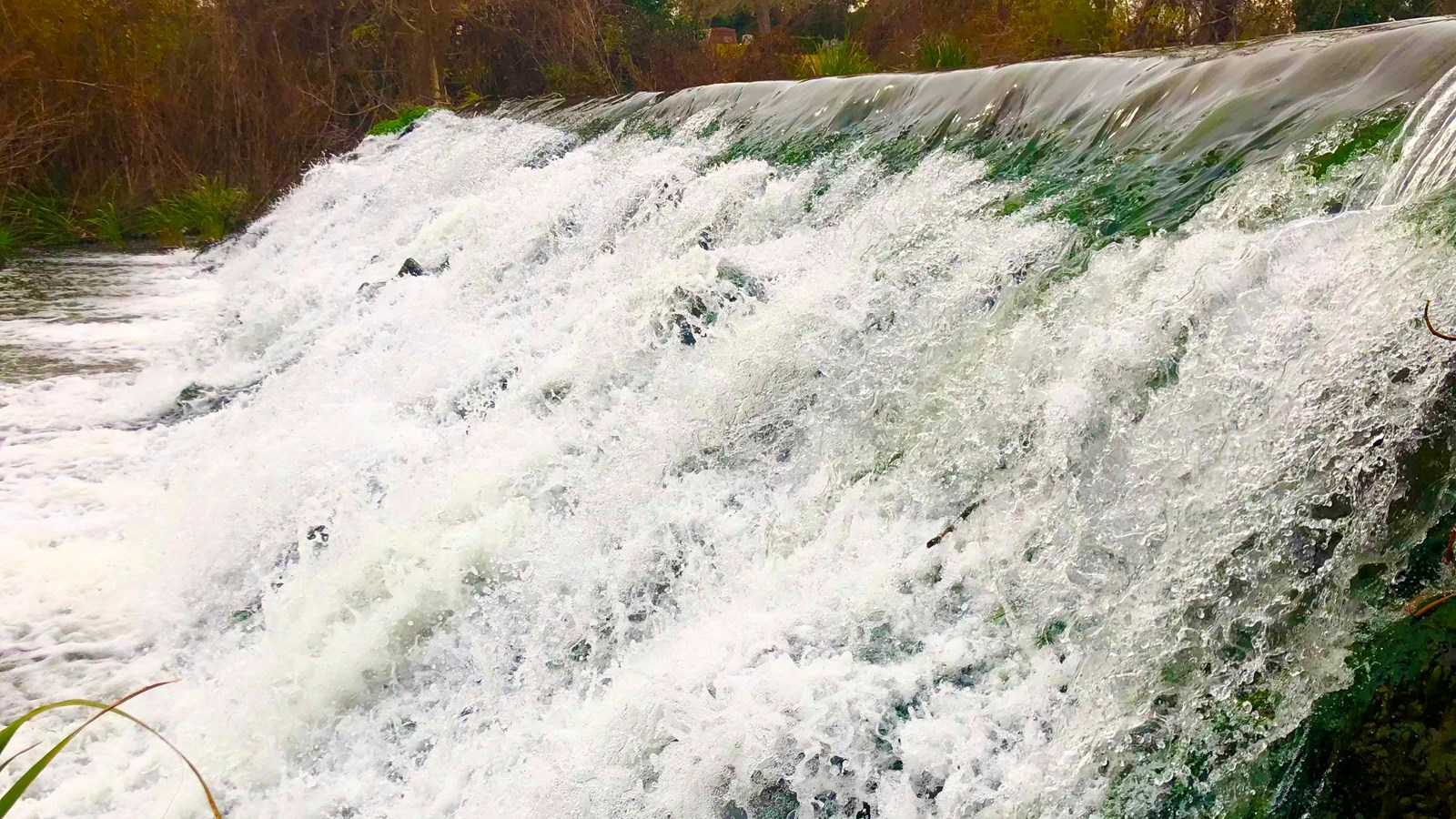Last updated: October 10, 2024
Place
Espada Dam

NPS Photo.
Cellular Signal, Parking - Auto
The success of the missions depended on the acequias, or irrigation ditches that supplied water to the mission farm fields. The success of the missions depended on being able to feed the people.
Missions were established based on topographic features, as landforms dictated the route of the acequia system. Farms required acequias as the rain in South Texas was too infrequent and could not be depended on to water the crops. A river with dependable flow, proper bank height, and slope were all requirements for establishing a mission. The San Antonio river met all those requirements.
Acequia systems began with a dam that would raise the water level. The dam diverted water from the San Antonio river and forced it into hand dug earthen ditches that carried the water to farms around the missions. Eventually emptying back into the San Antonio River. The Espada Dam still diverts water from the river into the Espada acequia system, the oldest continually used acequia system in San Antonio.
Acequias: The Lifeblood of the Missions
A short walk from the parking lot takes you to the Espada Dam, the only Spanish built dam that remains. The Espada dam was constructed by 1745. The dam is built from flagstone layers placed on a natural ledge across the San Antonio River. The shape of the dam is unusual in that it points downstream instead of upstream.
The Espada dam is a diversion dam. The dam raised the level of the water and pushed it into the acequia. Gravity did the rest!
The Espada Acequia was constructed between 1731 and 1745. The acequia is one of the best preserved examples of the Spanish acequia system.
Wild San Antonio
The San Antonio River is a great place to see wildlife. The Mission Reach Ecosystem Restoration project returned the natural riffle and flow of the river as well as native plants and animals. More wildlife returned to the area making the ecosystem richer and more diverse. A recent bird survey found 186 species of birds along the San Antonio River. At this spot along the river you can see Double-crested Cormorants resting on logs, Great Egrets wading along the rivers edge looking for its next snack, and Black-bellied Whistling Ducks in flocks floating in the river. Listen and you might hear how they got their name, from their boisterous whistle of a call.
This spot is also a great place to catch turtles sun bathing. Look along the top of the dam or on a floating log and you might see a Red-eared Slider or Texas River Cooter.
